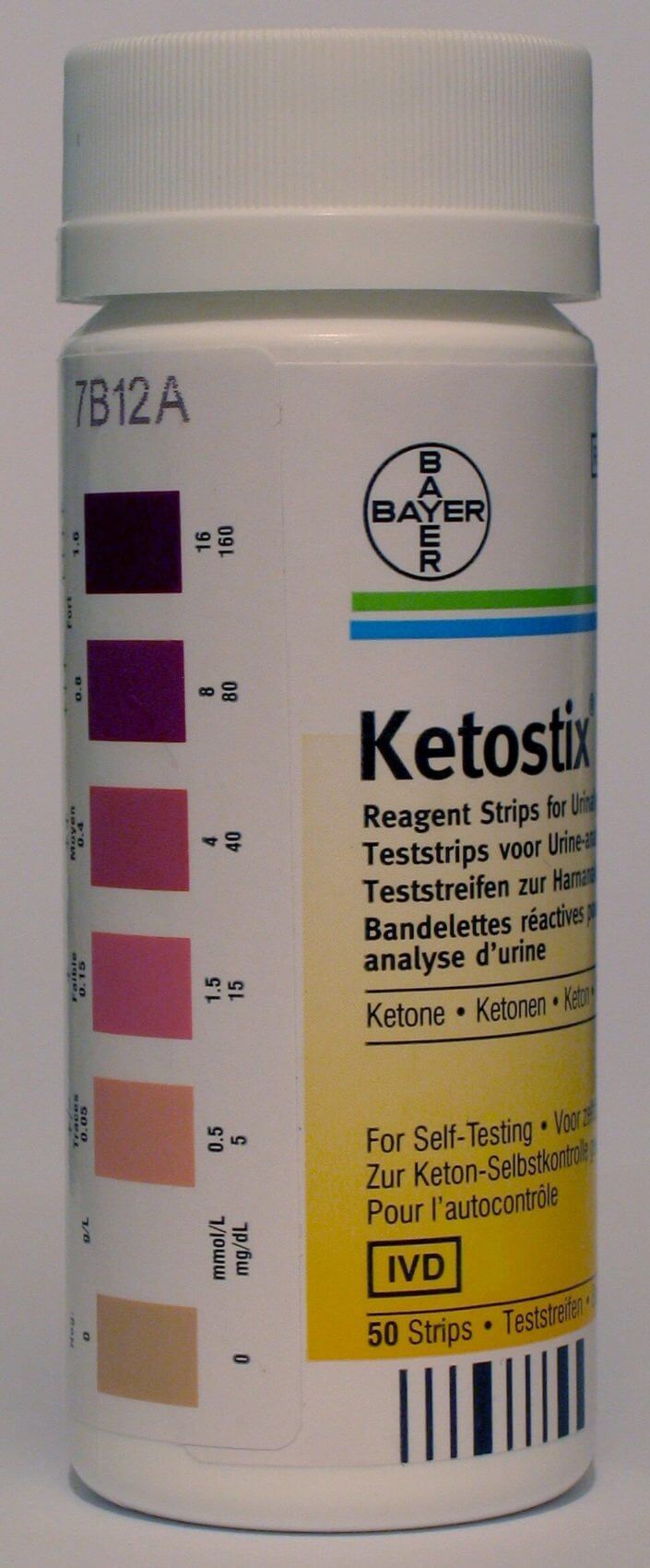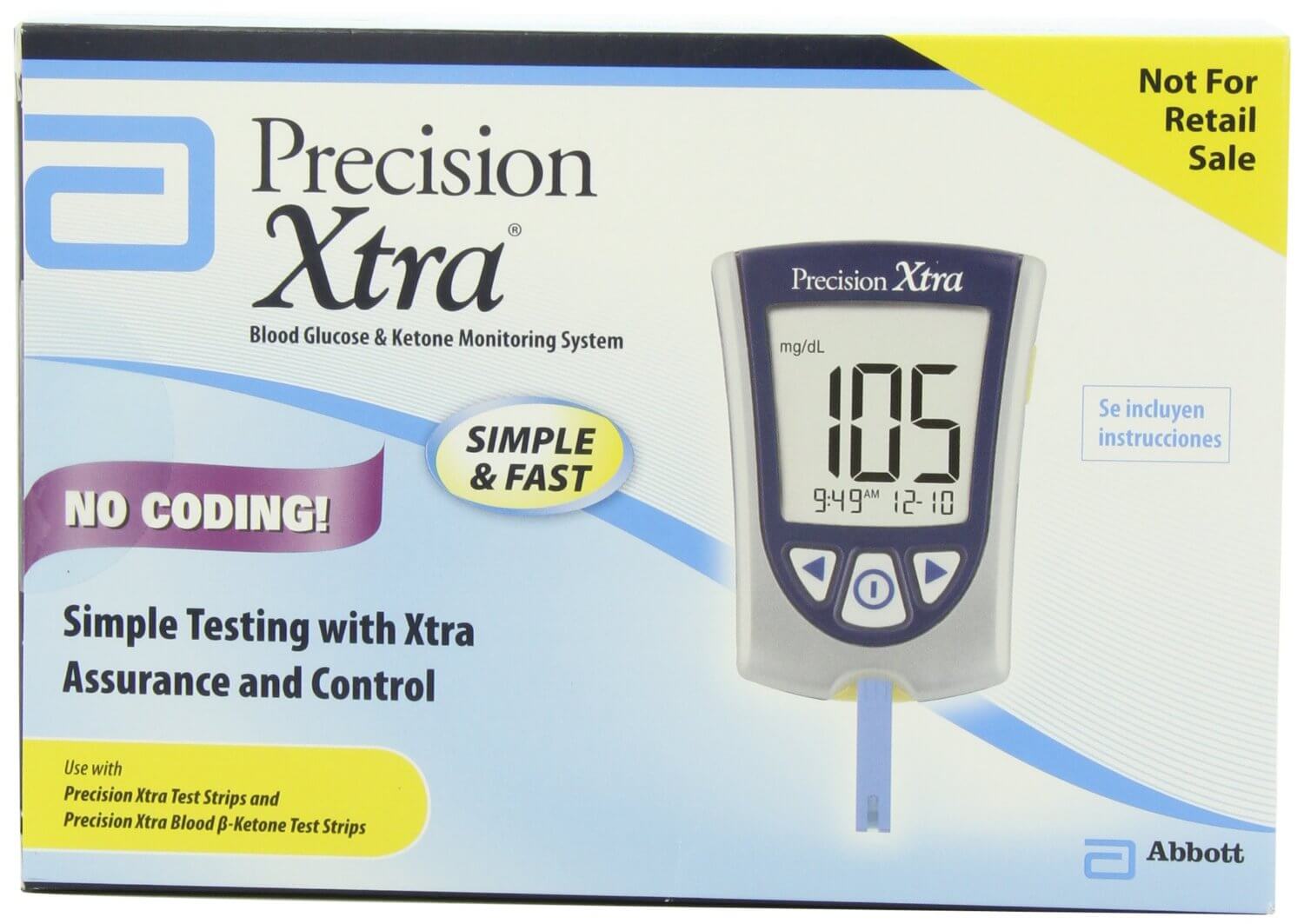During the process of becoming keto-adapted, your body is re-learning how to manufacture and use ketones as a source of energy instead of sugars or carbs. One of the simplest methods of testing whether your body is producing ketones is to use ketosis strips. Ketostix are the most popular available.
The process is pretty simple, you take a strip and either hold it in your urine stream or alternatively, wee into a cup and dip the stick in there. Then you compare the colour of the strip to the chart on the bottle. It’s important to compare the colour at the right time – typically 15 seconds after you have dipped it in your urine.
The most widely regarded standard figures for being in ketosis are if you measure between 0.5 – 3.0mmol of ketones.
 Here’s the thing, though… It’s important to remember that these strips simply tell you whether or not you are excreting ketones. And just because you are excreting ketones does not tell you that your body is using them (i.e. keto-adapted).
Here’s the thing, though… It’s important to remember that these strips simply tell you whether or not you are excreting ketones. And just because you are excreting ketones does not tell you that your body is using them (i.e. keto-adapted).
And, also if you are showing no ketones, that does not mean your body is not producing them. A highly keto-adapted person will excrete less ketones because their body is using them all. I know this may be a bit confusing, because then what’s the point of these strips, right?
So When are Ketone Strips Useful?
Essentially, Ketostix are useful when you are just starting out. When you are switching from eating a diet high in carbs to a ketogenic diet you can use these sticks to let you know that your body has started to produce ketones. This tells you that you are on the right track because stage one is that you start producing ketones!
So I would suggest that they can be useful in your first month. After that, as you become more keto-adapted, the reading becomes less and less reliable to the point where I would suggest you just throw the rest away. (Unless you want to continue keeping track of your excreted ketones, but I don’t know why you would want to do that!)
From this point onwards, if you want to know exactly what’s going on with the ketones your body is producing, it’s best to get hold of a blood ketone monitor and also, ideally, a blood glucose monitor. Some monitors allow you to test both.
 When you can test both your blood ketones and glucose you will be able to get a really good picture of how your body is utilising ketones. For example, if you are producing ketones and yet your blood sugar is still registering as high, you are not using your ketones effectively and are therefore not keto-adapted yet.
When you can test both your blood ketones and glucose you will be able to get a really good picture of how your body is utilising ketones. For example, if you are producing ketones and yet your blood sugar is still registering as high, you are not using your ketones effectively and are therefore not keto-adapted yet.
Conversely if your blood sugar reading is low and your ketones high, for example, blood glucose below 4.5mmol and ketones higher than 2.0mmol, you can be pretty sure that your body is using those ketones well and you are keto-adapted.
Get to Know What’s Right for You
Now, as always, everybody is different. There are no set numbers that indicate for definite whether you are using ketones properly. You need to go by how you feel too. Can you go for several hours without feeling hungry? Can you go through the whole day without any slumps? Is your mood stable and calm throughout the day? These things also indicate that you are keto adapted.
In conclusion, ketone strips can help you keep track of your excreted ketones, that’s all. They are good for if you’re just starting out but if you are further along the journey and want more accurate readings it is advisable to invest in a blood glucose/ketone monitor.
Get to know yourself and your body. Some women do a lot better not measuring at all because it can bring on a kind of obsessiveness, (I’ve been there). In which case just go with how you are feeling. This is, after all, the important factor. You’re doing this to look and feel great, so you can very well use those goals as your guidelines for if you’re on the right track or not!
Want to know my story? Click here.

